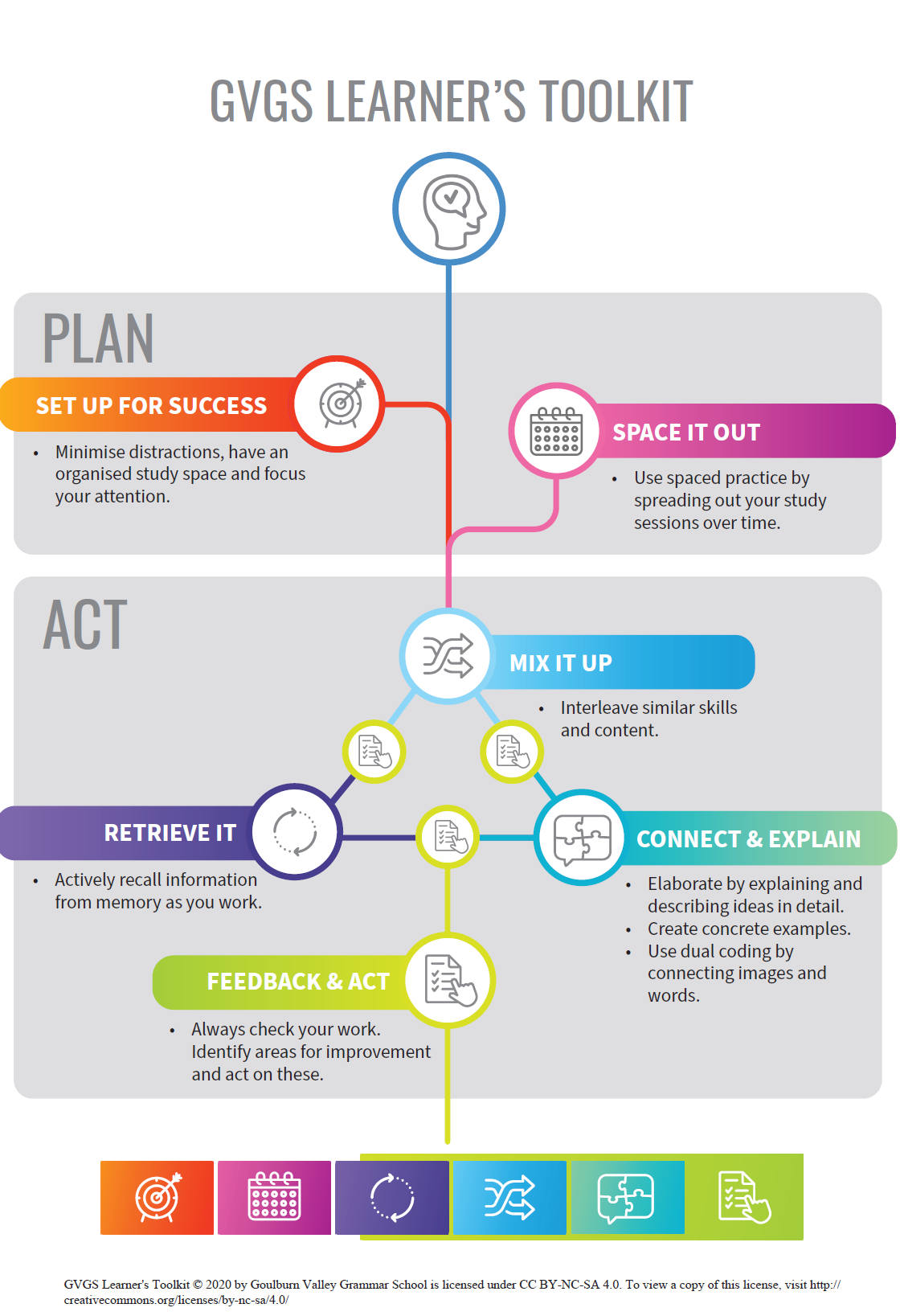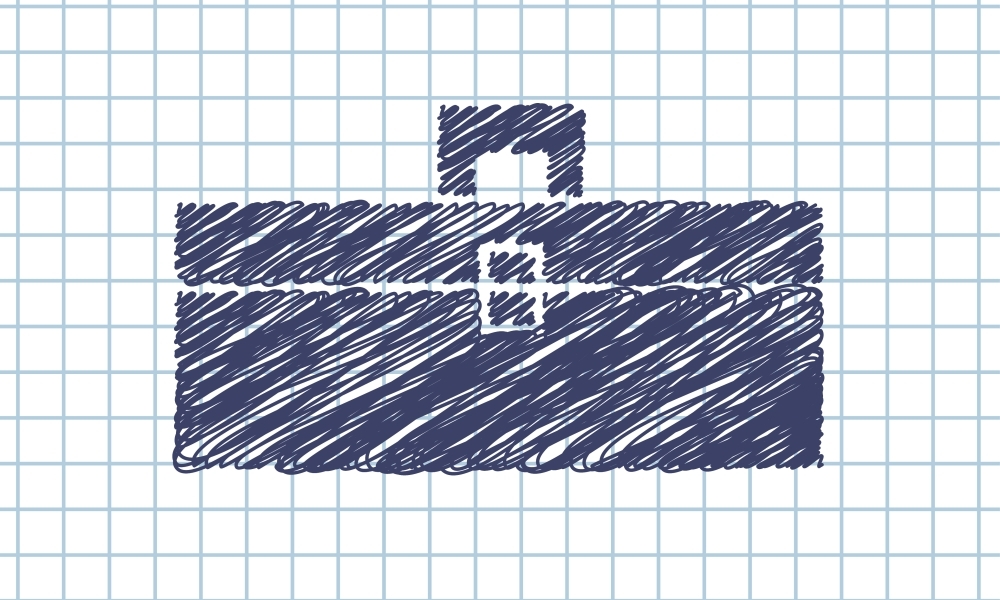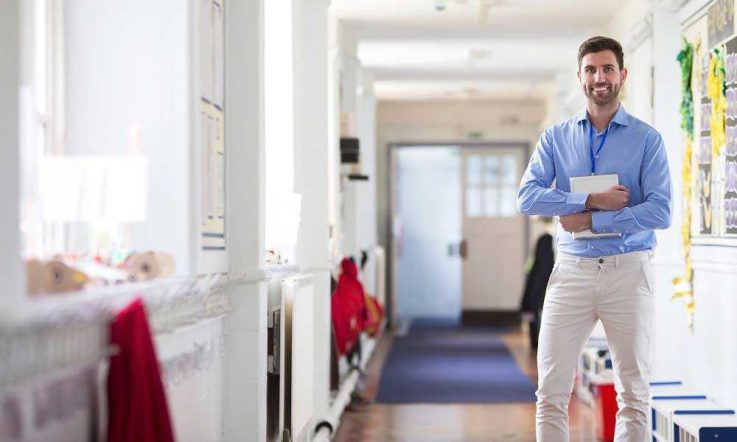Learning is complex – students need explicit and implicit knowledge, skills, and dispositions to succeed across the diverse and often crowded curriculum. But do our students actually know which learning strategies are the most effective?
Cognitive psychologists have found that many learning strategies that students use are relatively ineffective (Bjork et al., 2013). Students engaging in these ineffective approaches can hinder their development of long-term knowledge and skill. The result can be frustration (for students and teachers), reduced motivation, a reliance on others to help them study, and lower achievement.
At Goulburn Valley Grammar School (GVGS) in regional Victoria the Learning Leadership team recognised the need to better understand effective strategies that could be applied across the curriculum, and to develop a program that could support students’ understanding of how to learn and how to become more independent and self-regulating learners. It was also recognised that the success of such a program would require a common language around effective learning.
In partnerships with researchers from the Science of Learning Research Centre (SLRC) at The University of Queensland (UQ), as part of its Partner Schools Program, and The University of Melbourne, the team began a school-based research project to develop, implement, and evaluate a whole-school ‘Learning to Learn’ (L2L) program and a Learner’s Toolkit. Here is an overview of the project and some findings about its initial impact on students.
A strong evidence base for learning
The Learner’s Toolkit and L2L program draw on six key strategies well-evidenced in the literature that promote durable learning in a range of contexts and learners (Dunlosky et al., 2013; Weinstein et al., 2019). The six strategies are:
- Spaced Practice – spreading out repeated exposures;
- Interleaving – mixing together repetitions of different concepts or skills;
- Retrieval – deliberately recalling information from memory;
- Concrete examples – easier to remember than abstract information;
- Elaboration – asking ‘how’ and ‘why’ questions about a specific topic, and then trying to find the answers to those questions;
- Dual coding – combining verbal representations of information (words) with visual representations of information (pictures/diagrams).
The team recognised that the strategies needed to be discussed with common language that was shared by teachers, students, and parents, and that also connected to the school’s existing Model for Teaching and Learning. Efforts to develop a common language resulted in the GVGS Learner’s Toolkit (see Figure 1).

Figure 1: The GVGS Learner’s Toolkit
Support for staff, students and parents
The L2L program was developed, and introduced in Year 7, in 2020. L2L lessons ran separately from regular classes and explicitly taught the strategies and their applications across a range of disciplines. However, knowledge of a strategy and even of its effect on learning is not enough to change student learning behaviour: ‘… using the learning strategies … can increase student understanding and achievement, but they are only effective if students are motivated to use them correctly.’ (Dunlosky et al., 2013, p. 21).
Instead, students need to be exposed to, practise and apply strategies in a range of contexts. The team knew that, for an intervention like this to be successful, it needed to be properly embedded in lessons across the school. To support this, Dr Sean Kang (Senior Lecturer, Science of Learning, University of Melbourne) and Dr Jared Cooney Horvath (neuroscientist, educator, and author of Stop Talking, Start Influencing) provided professional learning sessions for all GVGS staff. These sessions helped build teacher knowledge and confidence in using the strategies.
Resources and information evenings have also been developed and implemented to educate parents and carers about the Learner’s Toolkit, so they can support students to make good study choices at home. This has been particularly valuable given how much time students have spent learning from home during COVID-19.
Evaluating the program
To evaluate the L2L program, the GVGS team, within the SLRC Partner Schools Program, developed pre- and post-test measures. The main measures were two scenario questions around advising a friend who was learning terminology as part of preparation for a test.
- What advice would you give your friend about how to study for the test?
- What activities would be best for learning these key terms?
The open response questions avoided reminding students about particular techniques, while allowing them to show their knowledge.
Ninety-six Year 7 students completed the pre-test (conducted early in Term 1, 2020) and the post-test (in Term 4). A teacher marked each response from 0 to 3, according to marking criteria. To reduce bias, teachers didn’t know if the responses were from the pre- or post-test.
The results indicated a growth in student knowledge about effective learning strategies and teacher observations early this year also suggested more widespread adoption of effective learning strategies by students when learning independently. Measuring the extent and efficacy of student strategy is the focus of the school’s UQ SLRC partnership in 2021.
Key learnings
Engaging in research and the research partnerships has been beneficial in developing, implementing and evaluating L2L. It has enabled translation of theory into practice by helping teaching staff engage with research that is relevant and connected to the GVGS school context.
Having a team of school staff driving the research has been important, and regular time has been scheduled to discuss and ensure progress and accountability. The necessity of having school structures in place to support the L2L program – in part by accommodating changes in staffing, timetabling and professional learning – has also been recognised.
Good progress has been made towards the initial goal of engaging with the research and teaching students ‘how to guide their learning of content using effective strategies’ (Dunlosky, 2013, p. 21). However, the leadership team acknowledge the detrimental impact of the pandemic. A return to face-to-face schooling will help further embed these strategies within the school’s teaching and learning practices.
Any schools that would like to learn more about the GVGS journey can contact Learning Leader James Sach at James.Sach@gvgs.vic.edu.au. Readers interested in knowing more about the Science of Learning or the SLRC Partner Schools Program can contact Dr Stephanie MacMahon via s.macmahon1@uq.edu.au
References and related reading
Bjork, R. A., Dunlosky, J., & Kornell, N. (2013). Self-regulated learning: Beliefs, techniques, and illusions. Annual review of psychology, 64(1), 417-444. https://doi.org/10.1146/annurev-psych-113011-143823
Dunlosky, J. (2013). Strengthening the student toolbox: Study strategies to boost learning. American Educator, 37(3), 12-21. https://eric.ed.gov/?id=EJ1021069
Dunlosky, J., Rawson, K. A., Marsh, E. J., Nathan, M. J., & Willingham, D. T. (2013). Improving students’ learning with effective learning techniques: Promising directions from cognitive and educational psychology. Psychological Science in the Public Interest, 14(1), 4-58. https://doi.org/10.1177/1529100612453266
Sumeracki, M. (2019, November 28). Six Strategies for Effective Learning: A Summary for Teachers. Learning Scientists. https://www.learningscientists.org/blog/2019/11/28-1
Weinstein, Y., Sumeracki, M., & Caviglioli, O., (2019). Understanding how we learn: a visual guide. Routledge.
As a school leader, how do you keep up to date with research on effective teaching and learning practices?
The leadership team at this school provided resources and information evenings for parents and carers about the strategies and the toolkit. How do you work with families to help them support students in making good study choices at home?



